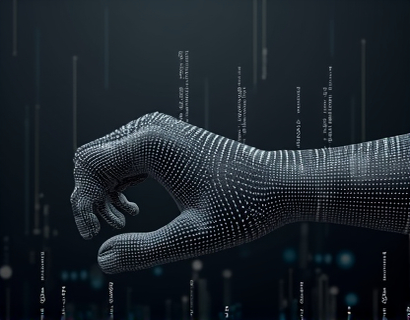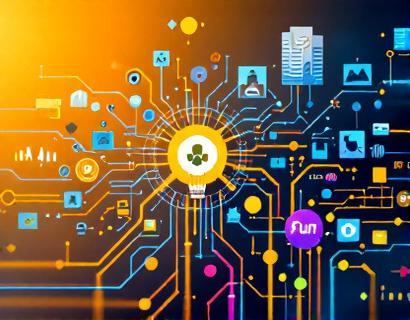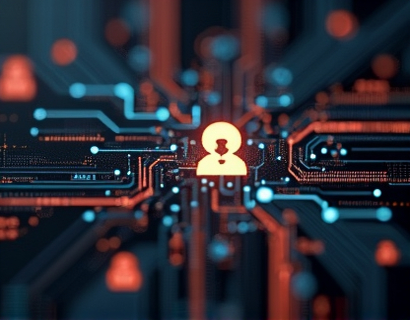Transforming Education with AI-Powered Chatbots: A Comprehensive Guide for Students, Families, and Educators
The integration of artificial intelligence in educational settings has opened new avenues for learning, making knowledge more accessible and personalized than ever before. Among these innovations, AI-powered educational chatbots stand out as a transformative tool, offering specialized insights tailored to the needs of students, families, and educators. This article delves into the capabilities and benefits of these chatbots, focusing on how they deliver industry-relevant knowledge and services through verified content, ensuring a safe and enriching educational experience for all users.
Understanding AI-Powered Educational Chatbots
AI-powered educational chatbots are sophisticated software applications designed to simulate conversation through natural language processing and machine learning algorithms. These chatbots are programmed to understand and respond to user queries with relevant and accurate information, adapting to the user's level of understanding and learning pace. Unlike traditional Q&A systems, these chatbots can engage in multi-turn conversations, providing step-by-step explanations and detailed insights on various topics.
Specialized Insights for Students
For students, AI chatbots serve as personalized tutors, offering support in subjects ranging from basic sciences to advanced mathematics and specialized fields like computer programming and engineering. These chatbots can break down complex concepts into understandable parts, providing examples and analogies to enhance comprehension. They can also assist with homework and project work, guiding students through research processes and helping them find credible sources of information.
One of the key advantages of AI chatbots for students is their availability 24/7. Students can seek help at any time, receiving immediate responses to their queries. This accessibility is particularly beneficial for those in regions with limited access to quality educational resources. Moreover, chatbots can track a student's progress and adapt their teaching methods accordingly, ensuring that each student receives tailored support to meet their unique learning needs.
Resources for Families
Families play a crucial role in a child's educational journey, and AI chatbots can be invaluable allies. For parents and guardians, these chatbots provide insights into their child's learning progress, offering suggestions on how to support their child's education at home. They can answer questions about educational milestones, learning disabilities, and effective parenting strategies to foster a conducive learning environment.
AI chatbots can also facilitate communication between educators and parents, summarizing class activities, assignments, and upcoming events. This ensures that parents are always informed and can actively participate in their child's education. Additionally, chatbots can recommend educational resources and activities that families can do together, strengthening the bond between parents and children while enhancing learning outcomes.
Support for Educators
Educators are the backbone of the educational system, and AI chatbots can significantly enhance their effectiveness. These chatbots can assist teachers by providing quick answers to common questions, reducing the time spent on administrative tasks. They can also offer lesson plan suggestions, aligned with curriculum standards and learning objectives, helping teachers design engaging and informative lessons.
For professional development, AI chatbots can recommend continuing education courses, research papers, and industry trends relevant to a teacher's subject area. This continuous learning ensures that educators stay updated with the latest pedagogical methods and technological advancements. Moreover, chatbots can facilitate peer collaboration by connecting teachers with similar interests or challenges, fostering a community of practice and shared learning.
Ensuring Content Verification and Safety
A critical aspect of AI-powered educational chatbots is the assurance of content verification and safety. To maintain the integrity of the information provided, these chatbots are equipped with robust verification mechanisms. All content is cross-referenced with credible sources, including academic journals, government publications, and established educational institutions. This ensures that the information is accurate, up-to-date, and free from misinformation.
For younger users, chatbots are designed with child safety in mind. They adhere to strict guidelines to prevent exposure to inappropriate content. The chatbot's responses are filtered to ensure they are age-appropriate and educational. Additionally, parental controls can be implemented to monitor and manage a child's interactions with the chatbot, providing an extra layer of security.
Enhancing Learning Through Interactive Engagement
One of the most compelling features of AI chatbots in education is their ability to engage users through interactive conversations. This interactivity not only makes learning more enjoyable but also more effective. Chatbots can use quizzes, games, and interactive scenarios to reinforce learning concepts, catering to different learning styles. For instance, visual learners can benefit from image-based questions, while kinesthetic learners can engage in simulated experiments.
These interactive elements help maintain student interest and motivation, reducing the likelihood of disengagement. By providing instant feedback on answers, chatbots help students understand their mistakes and learn from them, promoting a growth mindset. This immediate reinforcement is particularly beneficial in subjects where understanding builds cumulatively, such as mathematics and science.
Personalized Learning Paths
AI chatbots excel in creating personalized learning paths for each user. By analyzing a student's strengths, weaknesses, and learning preferences, the chatbot can curate a customized curriculum that addresses specific needs. This personalized approach ensures that no student is left behind, as the chatbot can adjust the difficulty level and pace of learning in real-time.
For example, a student struggling with a particular concept can receive additional practice problems and explanatory materials tailored to their level of understanding. Conversely, a student who grasps concepts quickly can be challenged with more advanced topics, keeping them engaged and motivated. This adaptability is crucial in a diverse classroom setting, where students have varying levels of prior knowledge and learning speeds.
Collaboration and Community Building
AI chatbots can also foster a sense of community among students, educators, and families. By creating forums and discussion groups within the chat platform, users can share experiences, ask questions, and collaborate on projects. This community aspect encourages peer learning and support, which are vital components of a holistic educational experience.
Educators can use these platforms to facilitate group projects and discussions, promoting teamwork and communication skills. Students can form study groups, helping each other with challenging topics and sharing resources. Families can connect with other parents to exchange tips and strategies for supporting their children's education. This collaborative environment not only enhances learning but also builds a supportive network for all stakeholders.
Future Prospects and Challenges
The future of AI-powered educational chatbots is promising, with ongoing advancements in AI technology poised to enhance their capabilities further. Integration with other educational technologies, such as virtual reality and augmented reality, can create immersive learning experiences that were previously unimaginable. However, with these advancements come challenges, such as ensuring data privacy, addressing ethical concerns, and maintaining the quality of human-teacher interactions.
It is essential to approach the implementation of AI chatbots in education with a balanced perspective, leveraging their benefits while mitigating potential drawbacks. Continuous research and development, along with stakeholder involvement, will be key to realizing the full potential of these innovative tools in education.
In conclusion, AI-powered educational chatbots represent a significant leap forward in making education more accessible, personalized, and effective. By providing specialized insights and verified content, these chatbots support the educational journey of students, empower families, and enhance the teaching experience. As we continue to explore and refine these technologies, the future of education looks brighter and more inclusive than ever.











































